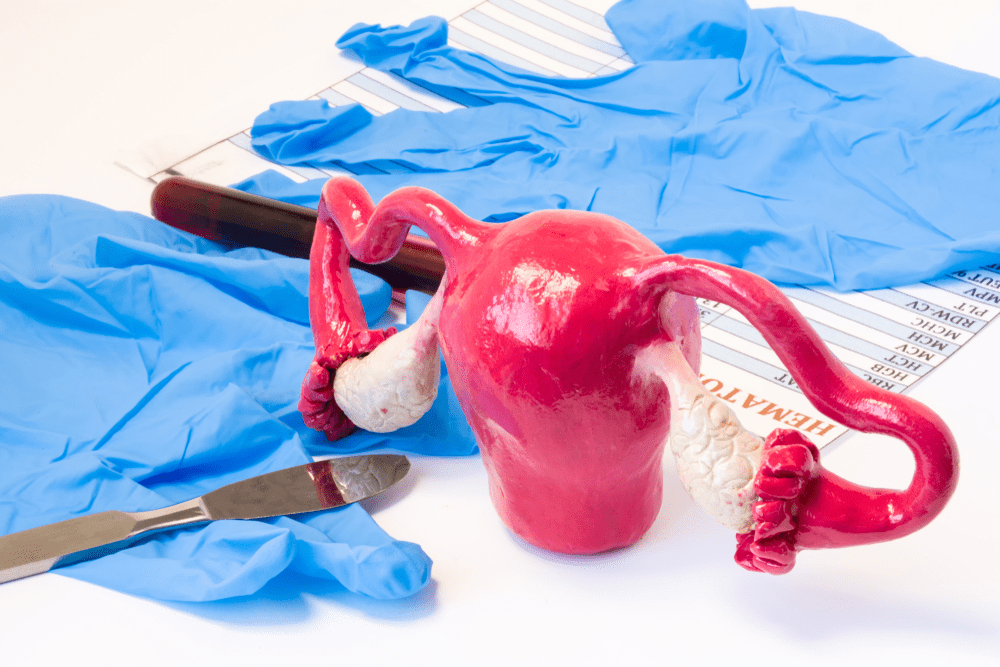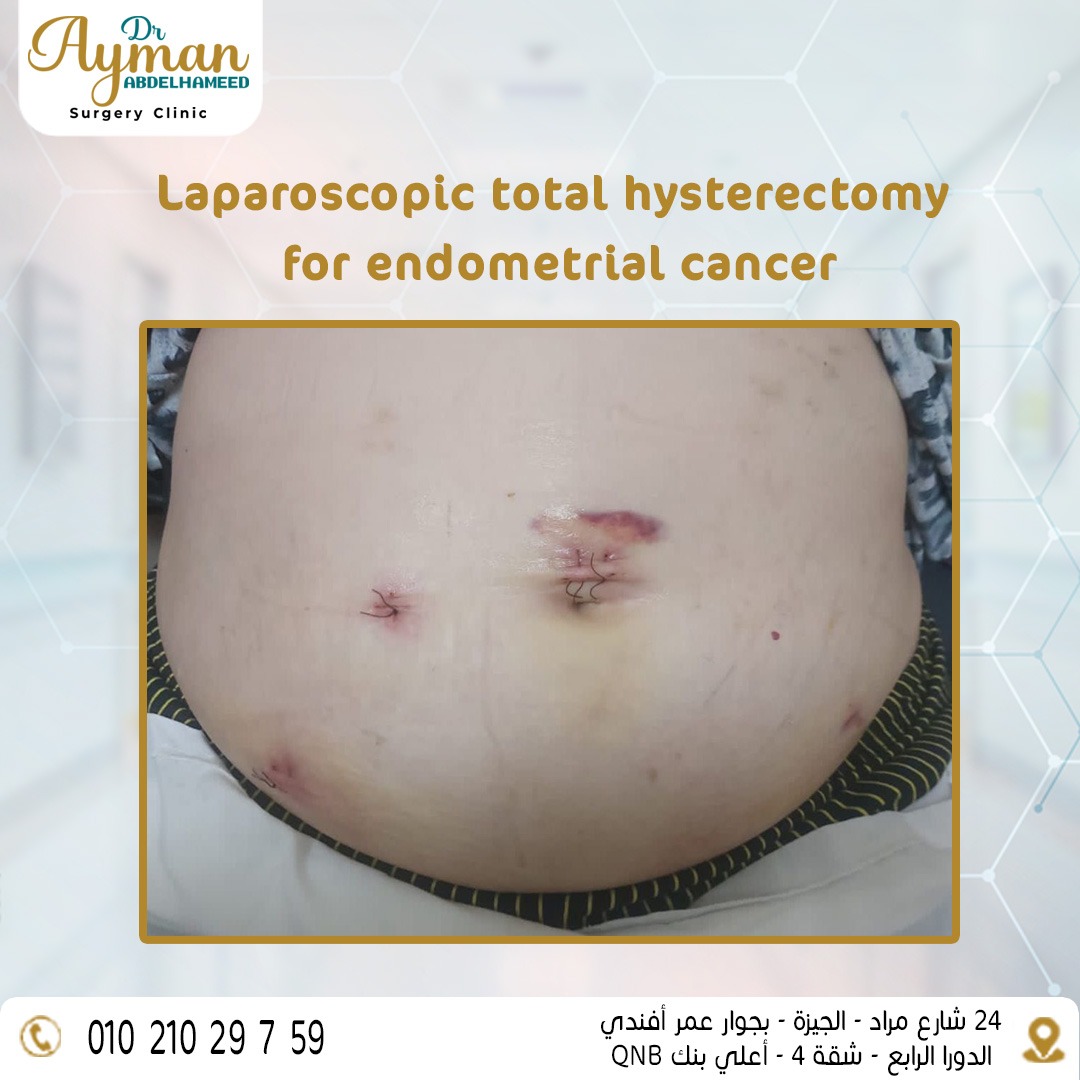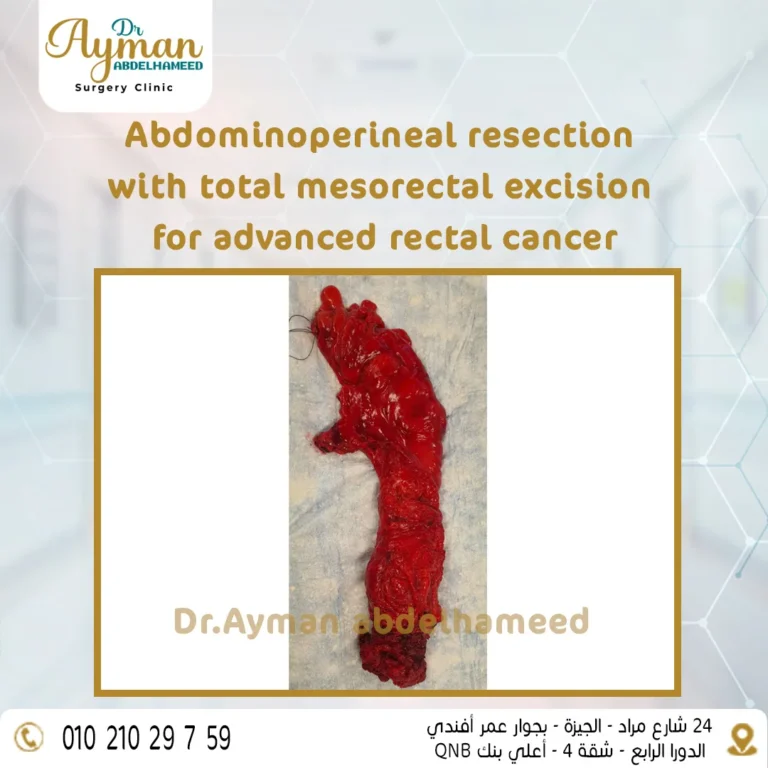Laparoscopic total hysterectomy for endometrial cancer
WHAT IS A LAPAROSCOPIC HYSTERECTOMY ?
A laparoscopic hysterectomy is a minimally invasive procedure in which the uterus is removed through keyhole surgery.
There are two main hysterectomy modalities : partial hysterectomy, in which only your uterus will be removed, and total hysterectomy, which involves the extraction of your uterus plus your cervix.
If ovaries need to be removed they can be done at the same time.

WHY WILL YOU NEED A LAPAROSCOPIC HYSTERECTOMY ?
There are multiple reasons to perform a hysterectomy, some of the most common conditions include :
Abnormal vaginal bleeding
Uterine prolapse
Severe uterine fibroids
Chronic pelvic pain
Endometriosis
Cancer of the uterus, cervix or ovary
WHAT DOES A LAPAROSCOPIC HYSTERECTOMY INVOLVE?
BEFORE THE PROCEDURE
Before your surgery, your doctor will explain to you the reasons and the steps of your surgical procedure.
It’s important to mention here if you have any other condition or take any medication. Your doctor will ask you to stop drinking or eating anything at least 8 hours before the procedure.





